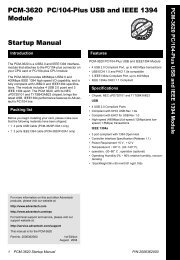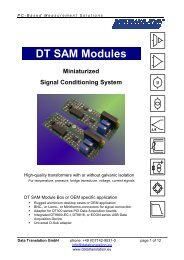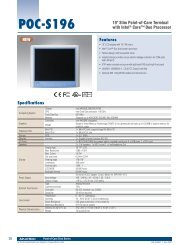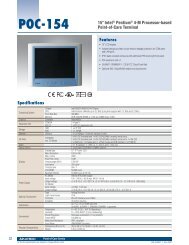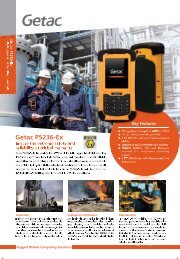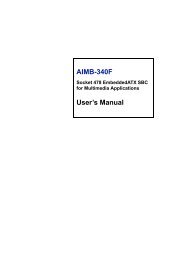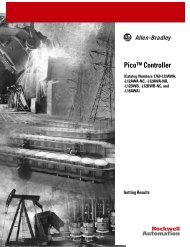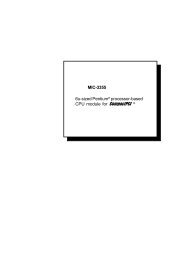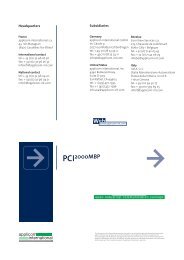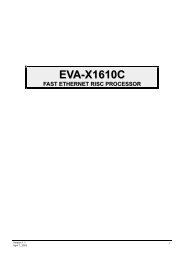1747-6.22, Backup Scanner User Manual
1747-6.22, Backup Scanner User Manual
1747-6.22, Backup Scanner User Manual
You also want an ePaper? Increase the reach of your titles
YUMPU automatically turns print PDFs into web optimized ePapers that Google loves.
4-56 Operating Your SLC 500 <strong>Backup</strong> System<br />
Publication <strong>1747</strong>-<strong>6.22</strong><br />
Primary Program<br />
Each data block that can be transferred from the primary to secondary<br />
SLC 5/0x is identified by its address in the M0/M1 files. The<br />
application program must transfer each block using the following<br />
procedure.<br />
A MOV instruction is used to get the Data Transfer Status Word<br />
(DTSW) and to see if the block can be transferred from the SLC 5/0x<br />
to the <strong>1747</strong>-BSN (if the data block status bit is clear). When this bit is<br />
clear, the new data block must be copied to this corresponding M0<br />
address. Then the data block control bit in the Data Transfer Control<br />
Word (DTCW) must be set to advise the <strong>1747</strong>-BSN that this new data<br />
block is ready to transfer to the secondary system. This bit must be<br />
held set until the corresponding bit in the DTSW is set by the<br />
<strong>1747</strong>-BSN. The bit must then be cleared.<br />
Secondary Program<br />
For each block that can be received by the secondary SLC 5/0x, its<br />
application program must do the following procedure.<br />
A MOV instruction is used to get the Data Transfer Status Word<br />
(DTSW) and to see if new data for the block is ready for reading in<br />
the secondary <strong>1747</strong>-BSN module. When this bit is set, the new data<br />
block must be copied from the <strong>1747</strong>-BSN M1 file. Then its<br />
corresponding bit in the Data Transfer Handshake Word (DTHW)<br />
must be set to advise the <strong>1747</strong>-BSN that the data block was already<br />
received. This bit must be held set until the corresponding bit in<br />
DTSW is cleared by the <strong>1747</strong>-BSN module. The bit must then be<br />
cleared.<br />
<strong>Backup</strong> System Theory of Operation<br />
A redundant system using the <strong>1747</strong>-BSN can be initially defined as<br />
an “Asynchronized Data Transfer” system. While the Input Image<br />
Table is automatically acquired from the RIO link by the secondary<br />
system, the Data Table is transferred by an application program<br />
written by the user. It is recommended that you minimize the amount<br />
of data to be transferred from the primary to the secondary processor<br />
because the program logic generates the same outputs based on the<br />
same inputs.<br />
All timer and counter values must be transferred at least once because<br />
the primary and backup processors may have started at different times<br />
and are not synchronized. Therefore, timer and counter data may be<br />
different in the two processors. For example, after a faulted processor<br />
is repaired and reinstalled as a backup, the timer and counter<br />
accumulated values, as well as the control words, in the two<br />
processors are different.<br />
The number of data table words to be transferred from a primary to a<br />
secondary processor is dependent on the user program and/or user<br />
architecture.




